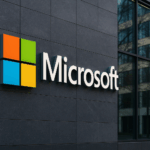Blue Apron, a pioneering venture in the meal kit delivery sector, is adapting its business structure by shifting from its traditional subscription-based model to a pay-as-you-go system. This strategic move comes in response to evolving consumer preferences, as more individuals seek flexibility in their dining options. With this change, Blue Apron aims to cater to the needs of busy families who desire varied meal choices without committing to a regular schedule. The company intends to introduce new offerings that include convenient one-pan meals and microwaveable dishes, providing consumers with diverse and effortless cooking solutions.
Unlike its previous model, this fresh approach was influenced by Blue Apron’s acquisition by Wonder in 2023. Wonder has integrated Blue Apron’s meal plans into its delivery app, reflecting a growing popularity for ready-to-eat and microwavable offerings. Historically, the meal kit sector has seen shifts as competitors like HelloFresh also evolve their services. HelloFresh recently announced a $70 million investment to expand its AI-driven meal planning services. While both companies maneuver within changing dining landscapes, HelloFresh focuses intensively on artificial intelligence, contrasting with Blue Apron’s emphasis on flexibility and consumer choice.
Why is Blue Apron Changing Its Business Model?
Blue Apron’s decision to transition away from weekly subscriptions stems from consumer demand for adaptability. Blue Apron’s Senior Vice President and General Manager Whitney Pegden highlighted the unrealistic nature of constant meal uniformity.
“People don’t like to eat the same every single night of the week,”
and emphasized the necessity for flexibility in meal solutions for young, active families.
How Does This Move Affect Competitors?
This shift allows Blue Apron to differentiate itself within the industry, potentially attracting customers seeking reduced commitment meal plans. Concurrently, HelloFresh, as a major competitor, continues to expand its service offerings. Its investment in AI aims to simplify recipe selection while aiming to strengthen consumer loyalty amidst rising food costs driven by inflation. Ultimately, while both companies strive for growth, their strategies diverge to meet distinct aspects of consumer demand.
Research by PYMNTS Intelligence emphasizes the influence of work style shifts on dining habits. With many transitioning back to office-based work, meal preparation time diminishes, leading to increased meal kit or delivery service subscriptions among this demographic. Notably, 75% of office employees with food subscriptions have joined such services within the last six months, showcasing the impact of lifestyle changes on dining preferences.
As Blue Apron introduces a more flexible payment model, it pivots towards catering to varying consumer needs while staying competitive in the meal kit space. Their approach contrasts with HelloFresh’s technology-oriented expansion, serving as a testament to differing strategies within the industry. Companies must continually adapt to market trends and consumer behavior, recognizing the need for innovation in a competitive landscape. By offering flexibility and convenience, Blue Apron and its competitors can enhance customer engagement and better meet their needs in a rapidly changing environment.










